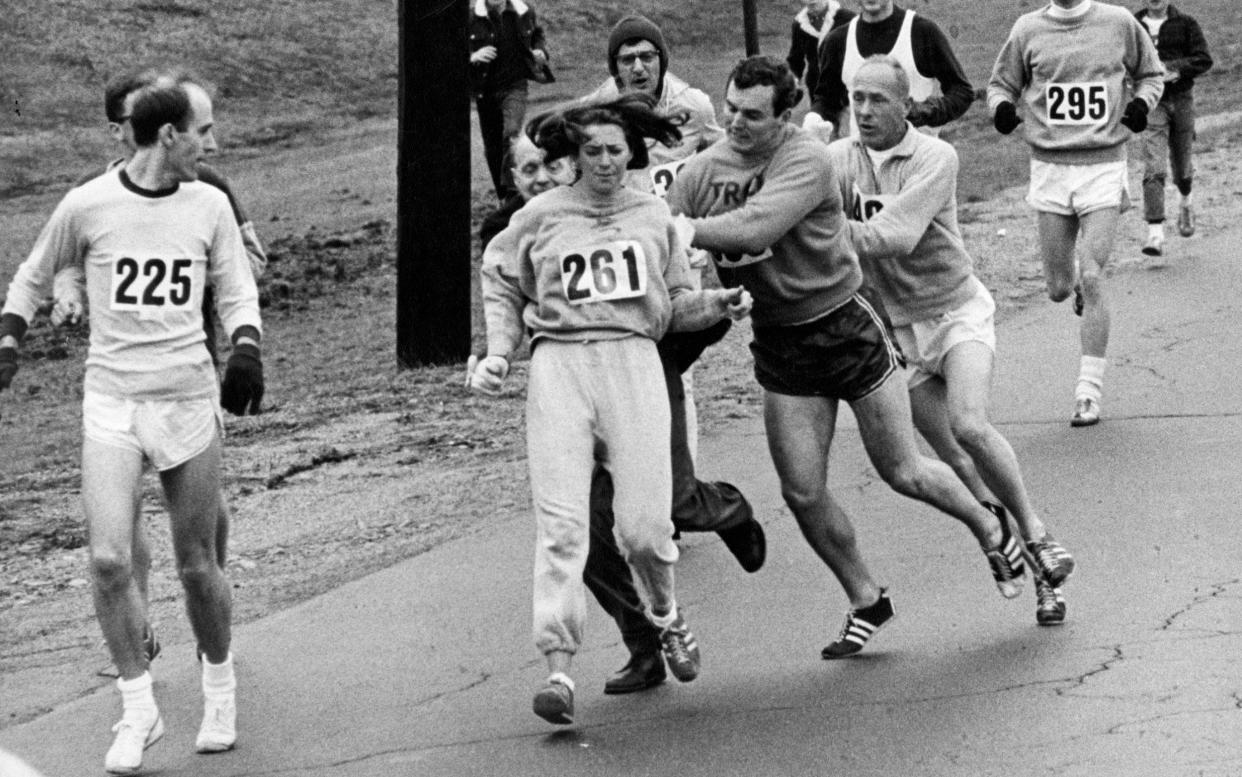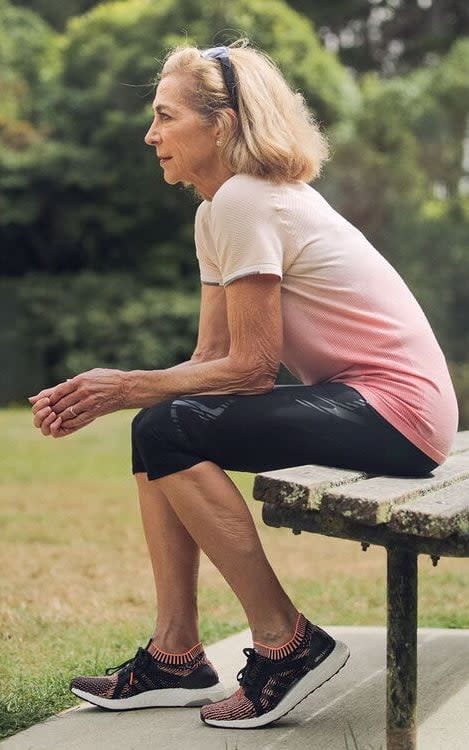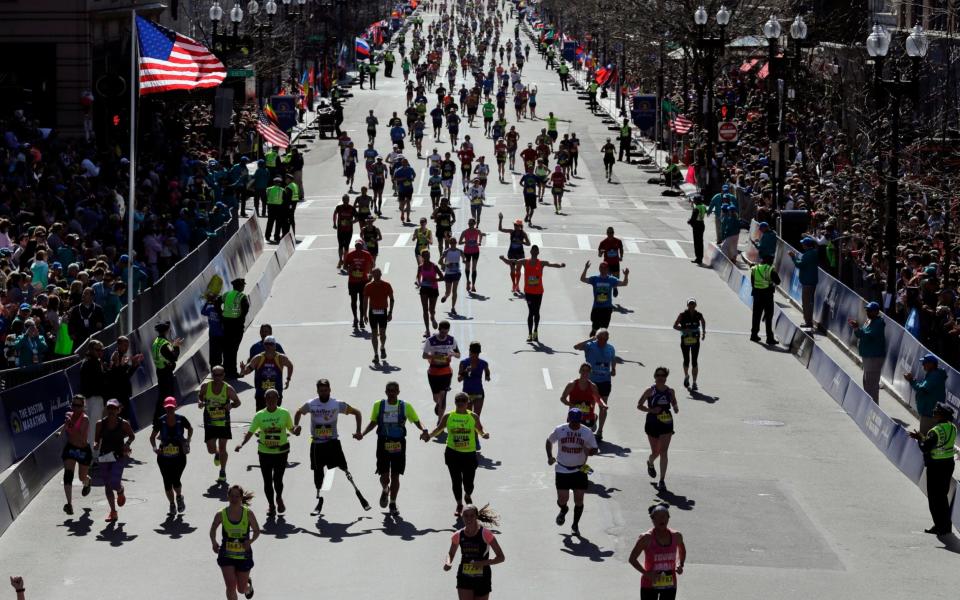Meet the first woman to run the Boston Marathon (illegally) 50 years ago – now 70, she's about do it again

Her body buckles as it is wrenched backwards; her face grimaces while other runners her stare incredulously at what is happening barely a mile and a half into the 1967 Boston Marathon.
The now-iconic photograph of Kathrine Switzer being physically assaulted by race official Jock Semple made headlines 50 years ago, when she became the first woman to officially enter and run the 26.2 mile race - despite the fact that women weren't officially allowed to take part until 1972.
On Monday Switzer, now 70, will return to the start line exactly half a century after that picture was taken following a lifetime of campaigning for the rights of millions of other women to compete in the same long distance events as men.
Before 1967 and since its inception in 1897 - making it the world's oldest annual marathon - the Boston Marathon was strictly men-only. The only woman to have tried to complete it was Bobbi Gibb who, a year before, dashed out of a bush and over the finish line.

In 1967, Switzer registered officially under a gender neutral name - K.V. Switzer - was given a bib with the number 261 on it and wore a baggy grey tracksuit that ensured preoccupied start line officials assumed she was “just one of the guys”.
Despite the attempt to drag her off course, she finished in 4 hours 20 minutes. But it would become a life-defining event for the 20-year-old Syracuse University student.
“I wasn’t trying to make a political statement, I just wanted to race,” she says, her voice still full of verve, down a phone line from her home in the US. “He came up behind me quickly, grabbed me by my shoulders and tried to pull my bib off. He pushed me screaming, ‘Get the hell out of my race.’”
She escaped and spent the following miles mulling over inequality within the sport and how she could change it.
“I made the decision to finish no matter what. I would have finished on my hands and knees at that point. That was the definitive change, I’d gone from embarrassed and terrified to radicalised.”

But change wouldn't come easily - it took Switzer another next five years to persuade the Boston Athletic Association to allow women to run in the Boston Marathon. In 1977, she created the Avon Women’s International Running Circuit, arranging 400 races in 27 countries for more than a million women (though earlier this month, women in Iran had to stage their own marathon after being barred from taking part in an official one, at the last minute).
Switzer collected medical evidence on stamina and endurance and successfully lobbied the International Olympic Committee to include a woman’s marathon for the first time in the 1984 Los Angeles Olympic Games.
“I am very persuasive - but you can’t argue with the facts.”
Another of her achievements was winning the New York City Marathon in 1974, although her running career started at Syracuse when she joined the men’s athletic team (there was no women’s) aged 19 and decided to prove her mettle to doubting coach, Arnie Briggs, who believed it a physical impossibility that women could cover the distance required for a marathon.
“He told me women are too weak and fragile and I might injure myself or my reproductive organs would get damaged. That was the myth at the time.”

Switzer swiftly proved him wrong, running 31 miles - five miles more than the regulation marathon distance to show she would complete it at all costs - at which point he fainted in shock, but agreed to help her enter the 1967 Boston Marathon.
She hasn't stopped since. Today, Switzer will slide into another pair of adidas trainers - just like the $26 pair she wore half a century ago - and compete on a circuit she hasn't attempted since that illegal 1967 race.
"I’ve been running all my life. My last marathon was 2011 in Berlin. I was told recovery is as important as training, so I run every other day now. That was hard for me to swallow but it has paid off. I am much stronger."
This time she’s taking part for 261 Fearless, a non-profit organisation named after her 1967 bib number that Switzer set up to encourage women to experience the sense of empowerment, strength and self-esteem that running brings.
“I’m nervous and excited. Time is not the issue, it is going to be about celebration. I'm lucky to have 125 people who will be running with me.
"The money raised is going to help empower women around the world. With the progress we’ve made in the last 50 years, imagine what we’re going to do in the next 50.”
Kathrine Switzer is partnering with adidas to unite and empower women globally through running. To find out more about adidas' free women's run Clubs in London visit adidas.co.uk/studioLDN
How to survive the last six weeks of marathon training | Tips from running coach Martin Roberts

